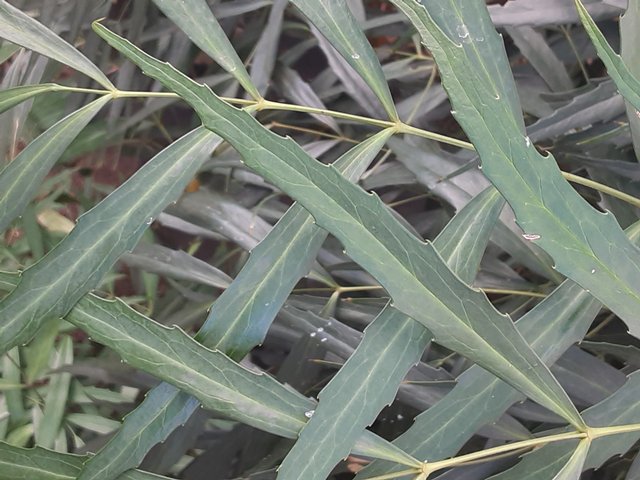
Mahonia confusa, often referred to as the Japanese holly-grape, is an evergreen shrub that adds a touch of elegance and texture to gardens. Native to Japan, this plant is prized for its striking foliage and vibrant flowers.
One of the most distinctive features of Mahonia confusa is its leaves. These are large, compound leaves composed of numerous leaflets arranged in pairs. The leaflets are typically a deep, rich green, though some varieties may have a slightly reddish tinge.
The overall shape of the leaves is reminiscent of a fern, with a delicate, lacy appearance. This fern-like quality makes Mahonia confusa a visually appealing addition to any landscape.

In addition to its attractive foliage, Mahonia confusa also produces clusters of bright yellow flowers in late autumn and early winter. These flowers are followed by blue-black berries that are a popular food source for birds. The combination of vibrant flowers and contrasting berries creates a stunning display throughout the year.
Mahonia confusa is a versatile plant that can be grown in a variety of conditions. It is tolerant of shade and can thrive in both acidic and alkaline soils. This shrub is also relatively low-maintenance, requiring minimal pruning or care.
Whether you're looking for a striking focal point for your garden or simply a plant that will add year-round interest, Mahonia confusa is an excellent choice. Its unique foliage, vibrant flowers, and low-maintenance nature make it a popular choice among gardeners and landscapers alike.
Ref.:
 |  |
Upvoted! Thank you for supporting witness @jswit.
Downvoting a post can decrease pending rewards and make it less visible. Common reasons:
Submit